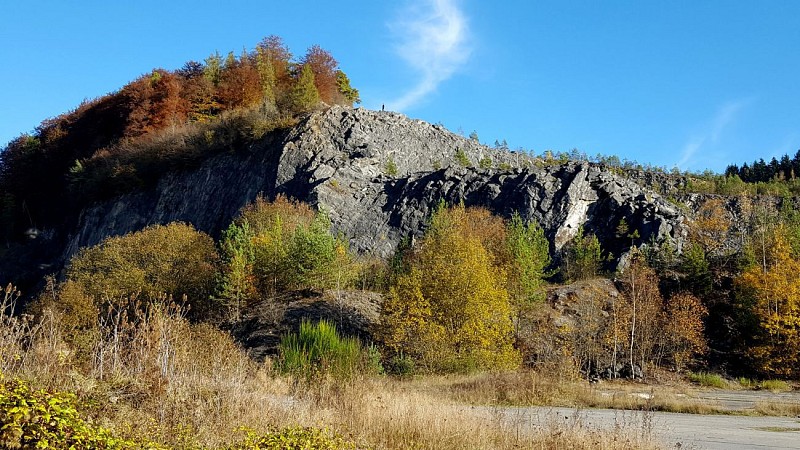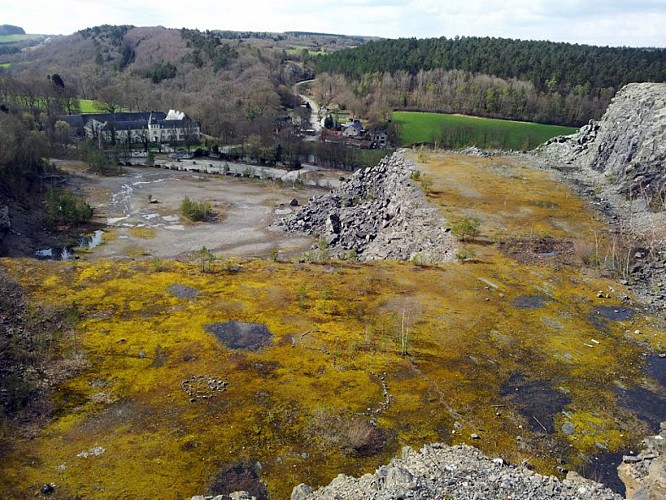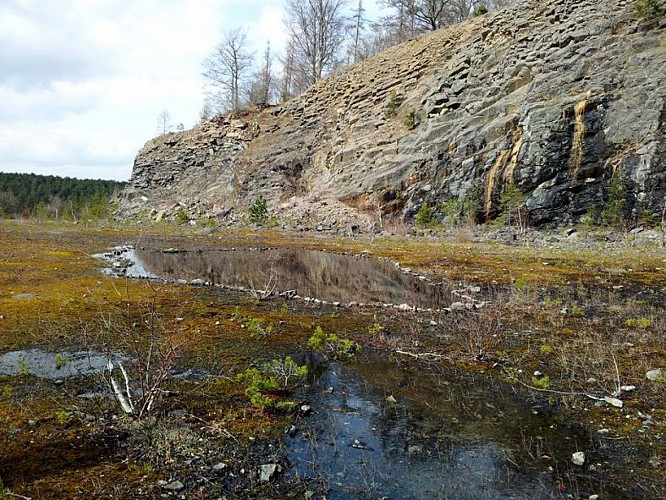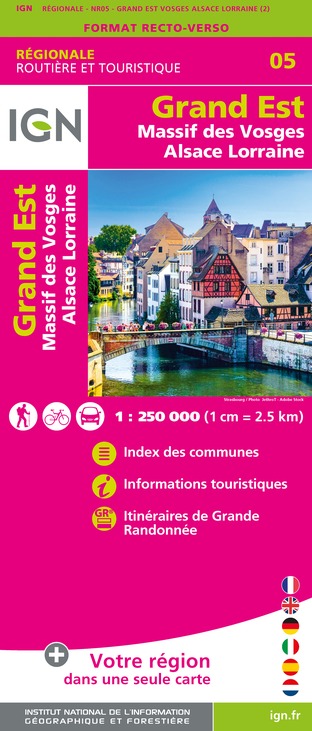Alert
Alerts
The Resteigne Quarry



Description
The quarry is now disused, but continues to attract regular visits from geology students at universities across Belgium, in part for the striking demonstration of stratigraphy it offers. The limestone found here dates from the height of the Eifelian and Givetian stages, from the Devonian period. This means it was formed in the primary era, some 90 million years ago. At that time, Resteigne lay beneath the shallow Devonian seas. It therefore comes as no surprise to find various marine fossils (corals, brachiopods, molluscs, crinoids and stromatopores) in the limestone of the quarry. The limestone extracted in Resteigne was highly reputed as “good building stone”, “dressing stone”, or for use as crushed stone. The quarry now provides a haven for a distinctive ecosystem, with a thriving population of extraordinary plant and animal life. Perhaps one of the most remarkable species found here is Oedipoda careulescens (the bluewinged grasshopper).
Technical Information
Altimetric profile
IGN cards






Data author






